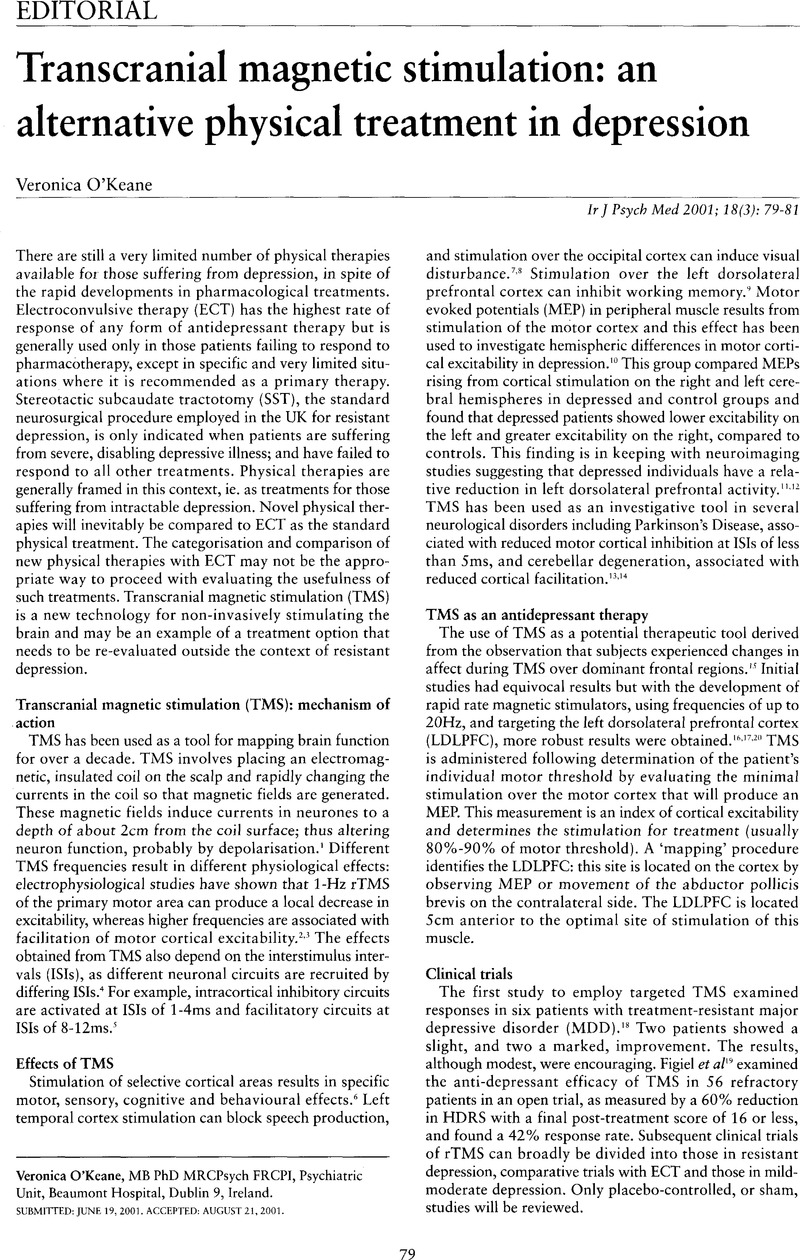Crossref Citations
This article has been cited by the following publications. This list is generated based on data provided by Crossref.
Goggins, Ray
2002.
A case for transcranial magnetic stimulation.
Irish Journal of Psychological Medicine,
Vol. 19,
Issue. 1,
p.
36.
Kennedy, Noel
and
McDonough, Michael
2003.
Pharmacological management of treatment resistant depression: a clinical review.
Irish Journal of Psychological Medicine,
Vol. 20,
Issue. 1,
p.
18.



